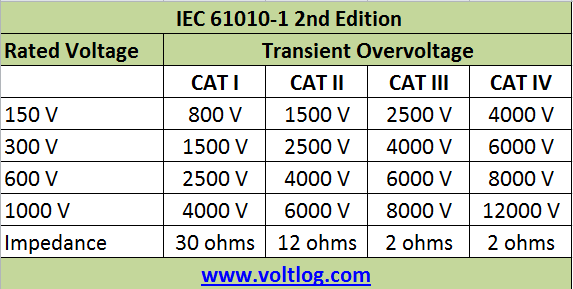Welcome to a new voltlog, today we’re going to test a range of pocket multimeters by applying transient voltages to their inputs and we’re also going to talk a bit about CAT ratings and what they mean.
CAT ratings is something we often see marked on measurement tools and they refer to the measurement category, a method of classification published by IEC (the International Electrotechnical Commission). Different types of circuits will require a different measurement category based on the total energy available in that circuit. For example:
- CAT I: is for measurements performed on secondary circuits not directly connected to mains.
- CAT II: is for measurements performed on local electrical distribution, such as that provided by a standard wall outlet 110VAC in the US or 240VAC in the EU.
- CAT III: is for measurements performed on hard wired building installation, for example distribution boards, circuit-breakers, bus-bars, junction boxes and industrial equipment.
- CAT IV: is for measurements performed on the source of the low voltage installation, like the power input to your home, your electricity meter or the primary overcurrent protection device.
As you can see a higher CAT number refers to a circuit with higher available power and higher potential energy transients. Within each of these categories we have voltage ratings and a higher voltage rating means the ability to withstand a higher transient.
Welectron.com which is an authorized Brymen distributor, loaned me the BM887 Insulation Multimeter to perform some testing on the pocket meters. I will be using this meter to apply 1KV to the pocket meters and see how they survive. The BM887 is made for measuring insulation resistance in industrial machines, certainly not for testing multimeter input protection but we can think of it as an abnormal voltage spike that might come rushing through a circuit you are measuring.
